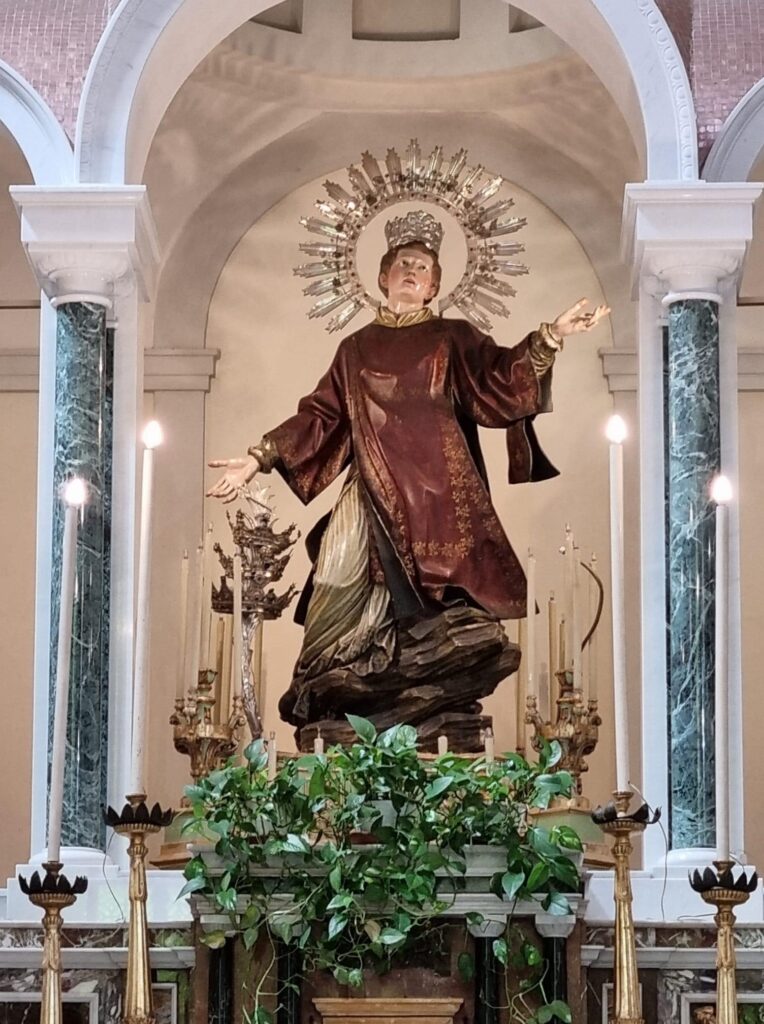
Author: Filippo Quattrocchi (Gangi 1738 – Palermo post 1812)
Date: 1784-1786
Material: Carved wood
Dimensions: 175 x 80 cm approx.
Location: Milazzo, cathedral of Santo Stefano Protomartire
As we can see from the Book of Results of the Mother Church in Milazzo, the sculptor Filippo Quattrocchi received, between May and August 1786, a payment of thirty ounces for the statue of Santo Stefano protomartire and another thirty for the pedestal below, Both transported by sea from Palermo. Thanks to this precise archival reference we know the circumstances in which arrived in Milazzo the wooden statue dedicated to the patron saint to be placed in the main sacred building of the city. Precisely the crucial role it was intended to have pushed the clients to turn to one of the most skilled Sicilian wood sculptors of the second half of the eighteenth century, famous for his ability to interpret with refined delicacy the religious spirit of the time.